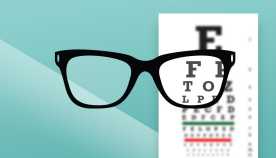I just received this from the Department of Transportation (DOT). On September 12, 2019, the US Access Board will hold a public hearing that will provide an opportunity to submit comments either in person or by phone. Comments on the proposal can also be submitted in writing until October 21, 2019. Just follow the instructions below. This is small part of the efforts that are made by Travelers United to help travelers.
Charlie
U.S. Access Board Releases Voluntary Guidelines for Onboard Wheelchairs for Public Comment
The U.S. Access Board has released for public comment advisory guidelines for wheelchairs used on commercial passenger aircraft during flight. These onboard wheelchairs are provided by air carriers as a means of facilitating the transfer of passengers with disabilities to aircraft lavatories since personal wheelchairs cannot be used in the cabin. The Department of Transportation (DOT) has expressed its intention to supplement its regulations under the Air Carrier Access Act (ACAA) to include performance standards for onboard wheelchairs on covered aircraft. The Board is developing these non-binding guidelines as technical assistance to air carriers and manufacturers of onboard wheelchairs by providing an example of how to meet DOT's planned performance standards.
As indicated in a notice published in the Federal Register, the guidelines specify dimensions, features, and capabilities for onboard wheelchairs that will allow passengers with disabilities to be more safely and comfortably transported aboard airplanes in flight. In addition, the guidelines include criteria to allow the onboard wheelchair to fully enter the lavatory in a backward orientation and be positioned over a closed toilet, and for the lavatory door to be closed. This feature would afford those passengers who cannot independently transfer to the toilet to have privacy in performing non-toileting tasks related to personal hygiene or medical needs. The Board has posed a number of questions to the public about specific provisions in the guidelines but welcomes input on all portions of the document.
As part of a negotiated rulemaking to improve access for air travelers with disabilities, DOT has put forth plans to supplement its ACAA regulations and require onboard wheelchairs with enhanced functionality on aircraft with more than 125 passenger seats.
Related information, including instructions for submitting comments, is posted at www.regulations.gov (Docket ATBCB-2019-0002). Comments are due October 21, 2019. In addition, on September 12, 2019, the Board will hold a public hearing that will provide an opportunity to submit comments either in person or by phone. Further details will be posted on the Board's website at www.access-board.gov/onboard. Those who wish to provide testimony at the hearing should contact Rose Marie Bunales at (202) 272-0006 (voice) orbunales@access-board.gov by September 5, 2019.
For further details on the guidelines or the public hearing, contact Wendy Marshall at (202) 272-0043 (voice) or marshall@access-board.gov, or Mario Damiani at (202) 272-0050 (voice) or damiani@access-board.gov.
Public Hearing on Advisory Guidelines for Aircraft Onboard Wheelchairs
September 12, 2019, 9:30 - 4:00 (ET)
Remote attendance options will be posted at: www.access-board.gov/onboard
Access Board Conference Center
1331 F Street, NW, Suite 800
Washington, D.C.










































































